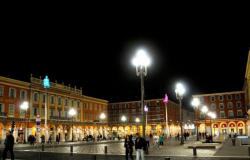
Excessive tourism puts pressure on health services, waste management, water supply and housing, all to the detriment of residents. The increase in the number of constructions of hotels and houses with a tourist destination endangers historical sites, biodiversity and natural resources.
Over tourism in Florence, Italy photo nexttourismgeneration eu
Recently, frustrations have erupted in several European honeypot destinations, forcing local authorities to address and reassess the relationship between tourists and residents.
Spain is facing a real estate crisis
One of the most pressing effects of excessive tourism in Spain is the housing shortage and rising rent prices for residents. The country has long been a popular destination for foreign visitors, but with digital nomads now flocking in, the housing situation has become critical.
Locals in Malaga have expressed their frustration by sticking stickers on walls and doors in the center of the Spanish city, telling visitors what the residents think of them. They range from quite mild “this was my house” (antes esta era mi casa) and “this was downtown” (antes esto era el centro) until “go the hell home” (You can house).

Residents of Malaga face an increase in rents, shutterstock photo
“Sticker Initiative” it belonged to the owner of a bar, Dani Drunko. He explained that he started the campaign after being evicted from the house he had lived in for a decade. The owner refused to negotiate the rent or sell the property to him because he wanted to rent it out short-term to tourists.
It’s a story being repeated across the country, where landlords have evicted long-term residents in favor of tourists or raised rents so that only high-income digital nomads can afford them.
Locals from the Canary Islands sleep in cars or in caves
Activists say the more than 10 million foreign visitors who vacation in the archipelago each year have ruined those who live there. Locals are reportedly sleeping in cars and caves due to rising house prices. A report by Ecologists in Action warned that almost 34% of the local population – almost 800,000 people – are at risk of poverty or social exclusion.
Building accommodation and services for the waves of tourists coming to the Canary Islands also puts pressure on land use, waste management, water supply and biodiversity. A group of activists on the Canary Island of Tenerife have planned a hunger strike over the construction of two new hotels.
Tens of thousands of residents came out to protest mass tourism with signs that read “People live here”, “We don’t want to see our island die” and “The Canary Islands have limits and the patience of people, too.”
Residents also resorted to putting up fake posters and stickers with “closed due to overcrowding”, in an attempt to discourage tourists from visiting popular spots.
Venice residents are protesting the new entrance fee
Venice is another destination that has been dealing with a huge number of tourists for a long time. And here there are more houses for tourists than for residents. Locals are faced with a dwindling supply of rental properties and exorbitant rates.
“Every day, people arrive at our offices with very serious housing problems: homeless people (often with a job), disabled people living in blocks of flats without elevators, people living in damp and dilapidated houses, declared unhygienic by the state sanitary system”,
says Susanna Polloni of the Venice Housing Solidarity Network.

The Doge’s Palace in Venice, photo by Pixabay
Activists are using the introduction of the new €5 entrance fee for day-trippers from April 25 as an opportunity to make their voices heard. Protesters, who are planning a demonstration on the day the tax is launched, say they want a different vision for the city that doesn’t prioritize tourism.
“It’s a new step forward towards the Venice we don’t want, the “museum city”. (…) A city emptied of inhabitants and soul, given that the touristic monoculture is currently devouring everything necessary for the life of a city: housing, protected jobs, public services, neighborhood shops and crafts”, Susanna Polloni also said.
Fence to block selfies of tourists
Last year, residents of a village in Austria resorted to extreme measures to make their problems heard.
Because the impressive backdrop of Hallstatt, located in the Austrian mountains, is believed to have inspired the Disney film Frozen, more than a million tourists descend here every year, many of them wanting to take a selfie with the famous view.
Last year, residents of the town became so frustrated that they erected a fence to prevent visitors from taking pictures. It was later removed due to backlash on social media, but it was hoped the barrier would prevent people from congregating at a popular selfie spot and disturbing residents by making too much noise.
Fake warning signs on Mallorca’s beaches
Last summer, activists put up fake warning signs on Mallorca’s beaches to keep English-speaking tourists away.

False warning signs have been put up on Mallorca’s beaches
Some posters warned of “dangerous jellyfish“, “rock falls” or sewage-polluted seawater. Others showed that the beach was closed with a symbol “don’t swim” below or warn that it takes a long time to get there on foot, even though the ocean is less than 100 meters away.
A few small lines of Catalan text underneath, however, revealed to the locals that these warnings were not real. These explained that “the problem is not a falling of stones, but mass tourism” or that “the beach is open except for foreigners and jellyfish”.
Tags: Tactics war residents tourists false signs warnings hunger strikes antiselfie fences
-




